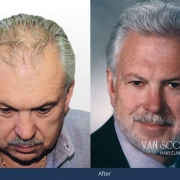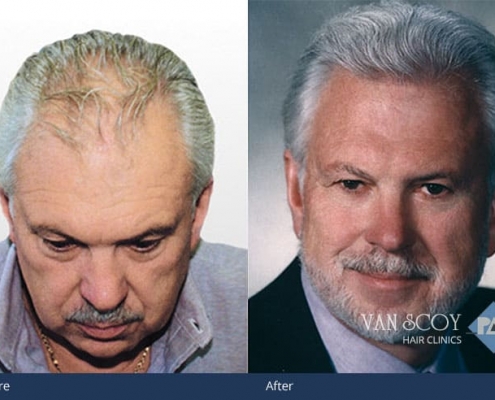Hair loss is a common concern that affects individuals around the world, regardless of their ethnicity. While the severity and patterns of hair loss may vary between individuals, there is a strong link between hair loss and ethnicity. In this comprehensive guide, we will explore the different factors that contribute to hair loss in various ethnic groups, including the unique characteristics of hair types, growth patterns, skull shapes, cultural influences, and statistics from different regions.
Understanding Hair Types
Each ethnicity has distinct hair types, which play a significant role in the susceptibility to hair loss. Let’s delve into the characteristics of hair types for different ethnicities:
- European Hair: Caucasians are known for having thick hair with a high number of hair follicles. However, European hair requires diligent care as it tends to become fragile with age.
- African Hair: Individuals of African descent typically have dense, curly hair. Although African hair has fewer active hair follicles, it is voluminous and requires extra care to maintain its healthiness.
- Asian Hair: Asian individuals have strong, fine hair with steep-angle follicles, which contribute to more body and less susceptibility to breakage. Asian hair is generally easier to care for and tends to retain a higher amount of hair as individuals age.
Understanding the specific characteristics and care requirements of each hair type is crucial for maintaining healthy hair and preventing hair loss.
Hair Growth and Density
Hair growth rates and density also vary among different ethnicities. Here’s an overview of the growth rates and approximate number of hairs on the head for different hair colors and ethnic groups:
- Hair Growth Rate:
- Caucasian hair grows at an average rate of 1.2 cm per month.
- African hair grows at a slower rate, approximately 0.9 cm per month.
- Asian hair has the fastest growth rate, averaging at 1.3 cm per month.
- Hair Density:
- Blondes have approximately 146,000 hairs on their heads.
- Black-haired individuals have around 110,000 hairs.
- Brunettes typically have 100,000 hairs.
- Redheads have approximately 86,000 hairs.
- Individuals of African descent usually have 50,000 to 100,000 hairs.
- Asians typically have 80,000 to 140,000 hairs.
It is important to note that a daily loss of 60-100 strands of hair is considered normal for individuals of all ethnicities.
Hair Loss Statistics Around the World
Hair loss varies by a few percentage points across different countries and geographical regions. Some statistics by nationality include:
- Czech Republic: The Czech Republic tops the list with 42.79% of men in Prague experiencing balding or being completely bald.
- Spain: In Spain, 43.60% of men are affected by hair loss.
- Germany: Hair loss affects 41.24% of men in Germany.
- France: In France, 39.24% of men experience hair loss.
- United Kingdom: Hair loss is prevalent among 39.23% of men in the UK.
- United States: Hair loss affects 39.04% of men in the US.
European countries tend to have higher rates of hair loss compared to other regions worldwide although there are other factors at play beyond just simple nationality and ethnicity.
Hair Loss in Women
While most studies focus on hair loss in men, women are also susceptible to hair loss based on similar ethnicity factors. Hair loss in women typically occurs at a later age compared to men, but the prevalence increases with age. By the age of 70, 70-85% of men experience hair loss, while 30-40% of women aged 65 and older are affected. Women may start experiencing hair loss around the age of 30.
It is worth noting that genetics is not the sole factor contributing to hair loss in different ethnic groups. Other factors, including diet, hair care practices, and styling techniques, can also influence the occurrence of hair loss. Inappropriate hair care products, excessive use of hair dyes, and damaging styling practices can all contribute to hair loss in individuals of any ethnicity.
Addressing Hair Loss for All Ethnicities
At Vanscoy Hair Clinics in Cleveland, Ashland, and Columbus, we understand the unique challenges faced by individuals from different ethnic backgrounds dealing with hair loss. We believe in providing personalized treatment plans tailored to individual needs, taking into account specific hair types, cultural influences, and genetic factors. Our safe, effective, and affordable non-surgical hair replacement and hair transplant solutions for men, women, and children have helped individuals of all races and ethnicities regain their confidence and achieve natural-looking results.
If you are experiencing thinning hair or hair loss, don’t hesitate to schedule a free one-on-one consultation with us today. Our team of experts will guide you through the available hair loss solutions and help you find the best treatment plan for your specific needs. You don’t have to live with hair loss when effective solutions are within reach.
Contact the Vanscoy Hair Clinic nearest you today and take the first step towards restoring your hair and your confidence.



 A person’s hair is not merely a part of their appearance; it is a defining characteristic that plays a significant role in describing them. From a full head of flowing locks to a bald scalp, the state of one’s hair can convey any number of subtle or not so subtle messages about their identity.
A person’s hair is not merely a part of their appearance; it is a defining characteristic that plays a significant role in describing them. From a full head of flowing locks to a bald scalp, the state of one’s hair can convey any number of subtle or not so subtle messages about their identity.


 Hair loss is stressful, especially at a young age. If your hair has started falling out increasingly more as each year passes, this can lead to a decrease in self-confidence. Whether it is the result of stress, poor diet, or hereditary issues, losing your hair is a uniquely difficult experience.
Hair loss is stressful, especially at a young age. If your hair has started falling out increasingly more as each year passes, this can lead to a decrease in self-confidence. Whether it is the result of stress, poor diet, or hereditary issues, losing your hair is a uniquely difficult experience. 
 Perhaps you are just discovering your hair is not as thick as it used to be, or maybe you have been losing your hair for some time. Either way, there is a solution for you that can make you look and feel like yourself again. With so many options out there today, it can be confusing as to which would be best for you and your hair loss. At VanScoy Hair Clinics in Columbus, Ashland, and Cleveland, Ohio, meeting with people and helping them with their
Perhaps you are just discovering your hair is not as thick as it used to be, or maybe you have been losing your hair for some time. Either way, there is a solution for you that can make you look and feel like yourself again. With so many options out there today, it can be confusing as to which would be best for you and your hair loss. At VanScoy Hair Clinics in Columbus, Ashland, and Cleveland, Ohio, meeting with people and helping them with their 

 The number of men and women in the U.S. that have hair loss is amazing. By age 35 over two-thirds of men will experience hair loss, and 30 million women also by age 35 will develop some degree of thinning hair.
The number of men and women in the U.S. that have hair loss is amazing. By age 35 over two-thirds of men will experience hair loss, and 30 million women also by age 35 will develop some degree of thinning hair.
 When I noticed my hair was receding, I started doing some research and that is how I came across Van Scoy Hair Clinics. I tried to find out as much as I could about the options available for hair restoration. I started to read a lot on
When I noticed my hair was receding, I started doing some research and that is how I came across Van Scoy Hair Clinics. I tried to find out as much as I could about the options available for hair restoration. I started to read a lot on 